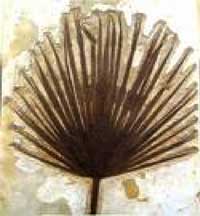Good morning out there!
Maybe
you are sitting in front of your computers reading this blog, sipping a
cup of tea or coffee. Or maybe it is late in the evening and you
finally have a moment and just now are sitting down with your super to
read a few things on your laptop. Whatever the case; hello out there and
I hope you had a bright sun shiny week!
And
that is how it would have been for Noah and his family as they stepped
off the ark. For the first time there was no high vapor layer
surrounding the earth protecting the inhabitants from the bright rays of
sunshine. Perceivably God woke the predatory animals out of their
estivation/hibernation state. And while these creatures shook off the
affects of a long sleep, logic dictates the prey animals and all their
offspring exited the ark and scattered out from its resting place.
 Logic
also dictates that these prey animals would have moved far away as the
ark which once represented safety, now held eminent danger in the form
of meat eating predators. For God had given His permission to eat meat.
“Everything that lives and moves will be food for you. Just as I gave
you the green plants, I now give you everything…And for your lifeblood I
will surely demand an accounting. I will demand and accounting from
every animal.” (Genesis 9:3-5a)
Logic
also dictates that these prey animals would have moved far away as the
ark which once represented safety, now held eminent danger in the form
of meat eating predators. For God had given His permission to eat meat.
“Everything that lives and moves will be food for you. Just as I gave
you the green plants, I now give you everything…And for your lifeblood I
will surely demand an accounting. I will demand and accounting from
every animal.” (Genesis 9:3-5a)
How
could just the prey animals on the ark sustain so many predators? Again
common sense tells us that the prey based creatures bred on the ark.
Let’s take two mice for example. Every thirty days they can reach sexual
maturity. In a hundred and fifty days, the mouse kind (rodents) alone
would be over six thousand individuals (assuming all individuals lived
and bred unchecked). They may even have begun to split up into different
varieties such as smaller and larger individuals (i.e.mice and rats). A
single female lagamorph (rabbits and hares) can in one season (9 months
long), produce as many as 800 children, grandchildren, and
great-grandchildren.
 On the other hand, the predator animal kinds (feline, Tyrannosaurus,
canine, birds of prey, crocodiles, etc) would only have the two
individuals who entered the ark, exiting it. And even then it would take
several days to shake off the affects of hibernation. They would be
moving slowly while their prey base would spread rapidly away from the
sense of imminent danger into a land barren of competition and full of
newly established vegetation.
On the other hand, the predator animal kinds (feline, Tyrannosaurus,
canine, birds of prey, crocodiles, etc) would only have the two
individuals who entered the ark, exiting it. And even then it would take
several days to shake off the affects of hibernation. They would be
moving slowly while their prey base would spread rapidly away from the
sense of imminent danger into a land barren of competition and full of
newly established vegetation.
The
animals and plant life would have continued to increase and multiply
broadening their seemingly unlimitless boundaries. Life would have
flourished for approximately the first three post-flood generations (one
generation being about thirty years). “The Bible gives us an inerrant
chronology for marking historical events. It tells exactly how many
human generations passed from the Food to Abraham’s birth: eight.”[1] That means there were three generations between the Great Deluge and the Tower of Babel (Arphaxhad, Salah, and Eber).
 |
| Palm fossil from Antarctica |
During
Arphaxhad's generation, forests grew in the arctic and even on
Antarctica (which would have had a slightly bigger but similar
configuration). “Drilling down through Antarctica's ice sheet,
scientists have found in sediment layers beneath the ice sheet fossils
of a subtropical rainforest, complete with palm trees and macadamia
trees. For these to grow, the land would have to be frost-free for a
brief time after the Flood.”[2]
But
already by Salah’s generation, Antarctica began to freeze over. And at
the very end of Eber’s generation, the Ice Age would have begun its
snowballing effect (pun intented!), changing the climate and environment
uniquely and drastically for the next seven hundred years.
Stay tuned next week for more fascinating information of the next major historical event…The Ice Age!
Until then, God Bless and take care!
Willow Dressel
This
week in the night skies: Wednesday is the dark night of a new moon.
Watch each night after that as the thin crescent thickens and gets
higher and higher one hour after sunset in the dusky sky. By Sunday it
will be slightly above and to the left of Jupiter one hour after sunset.
References:
No comments:
Post a Comment